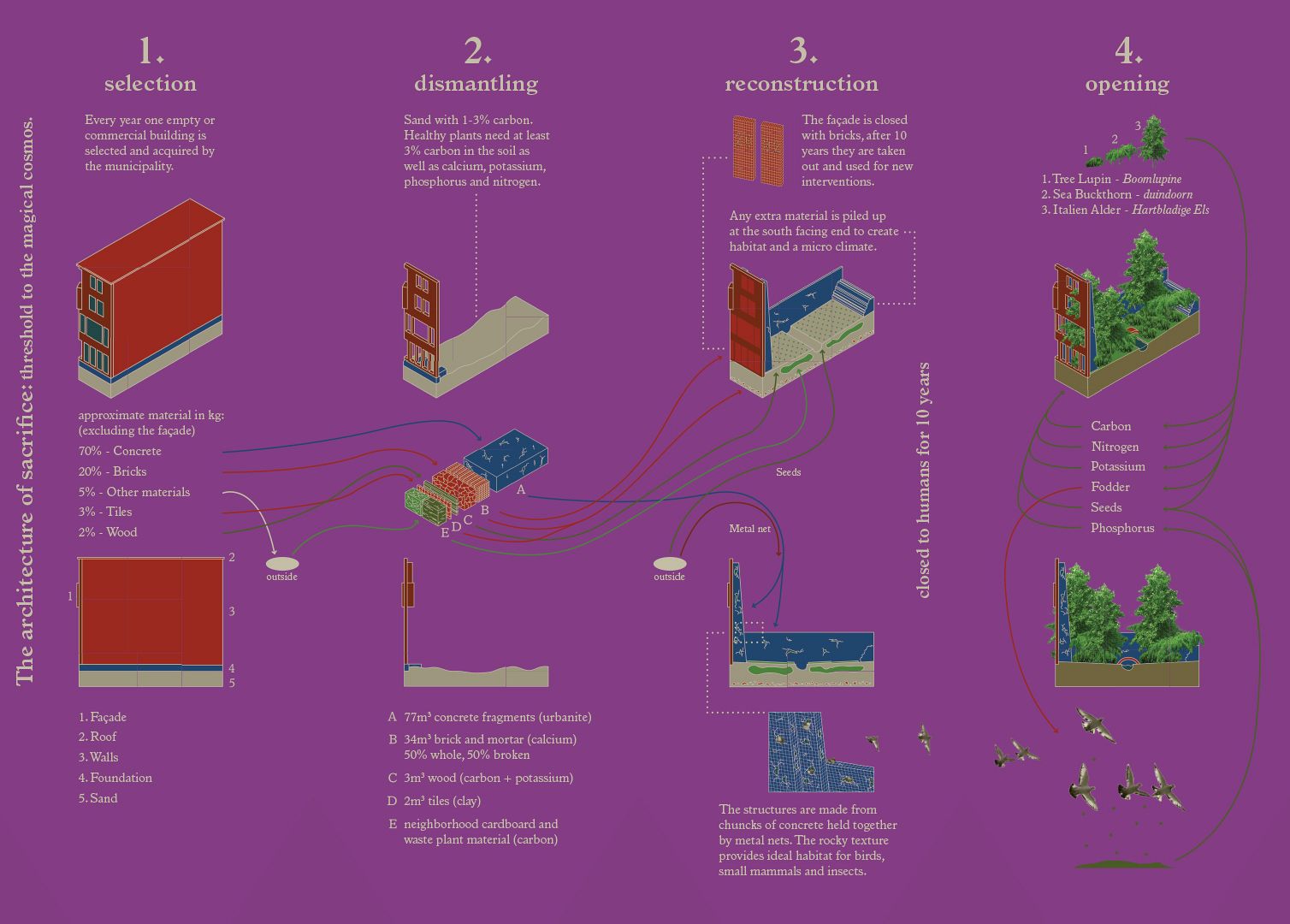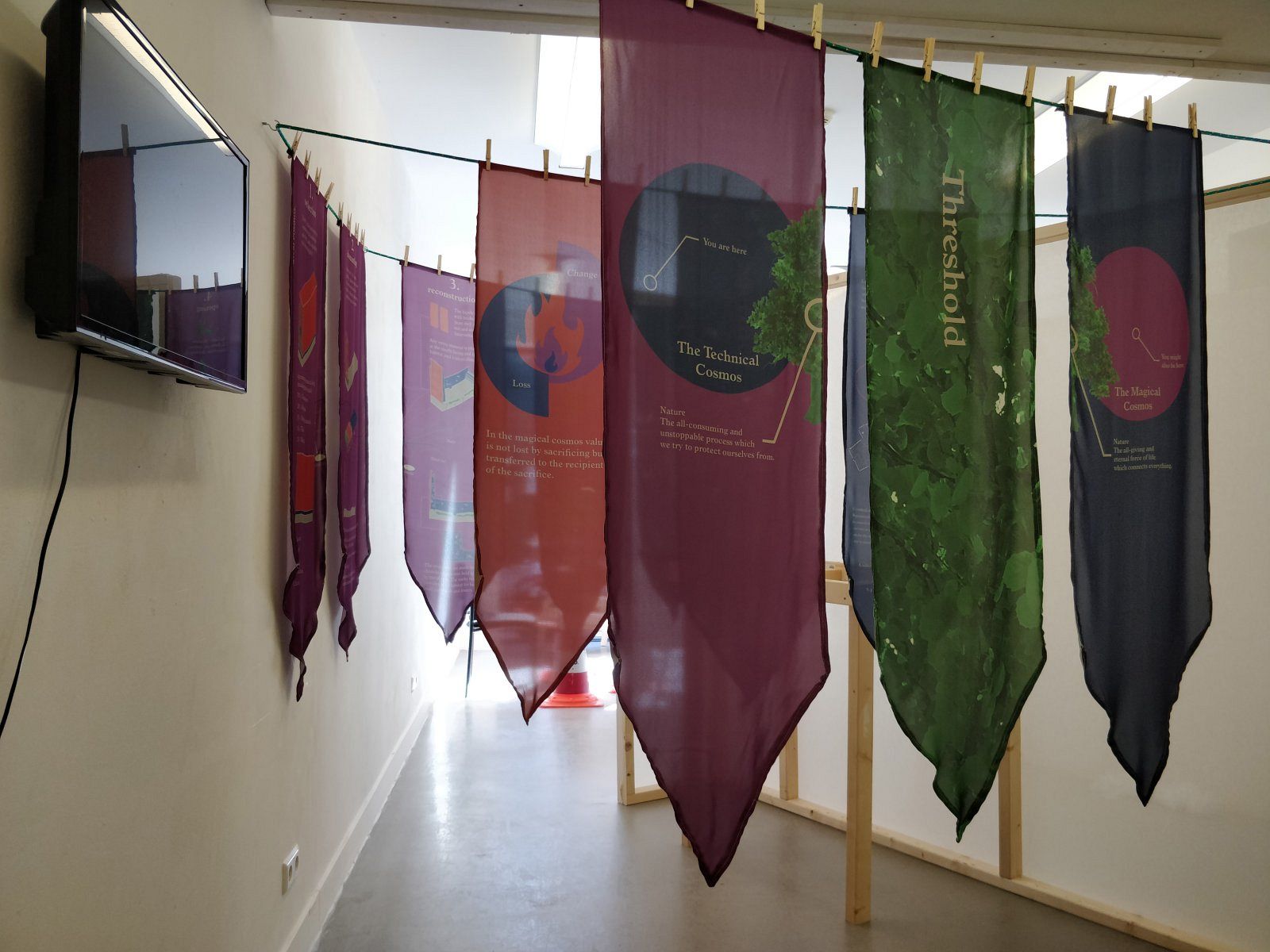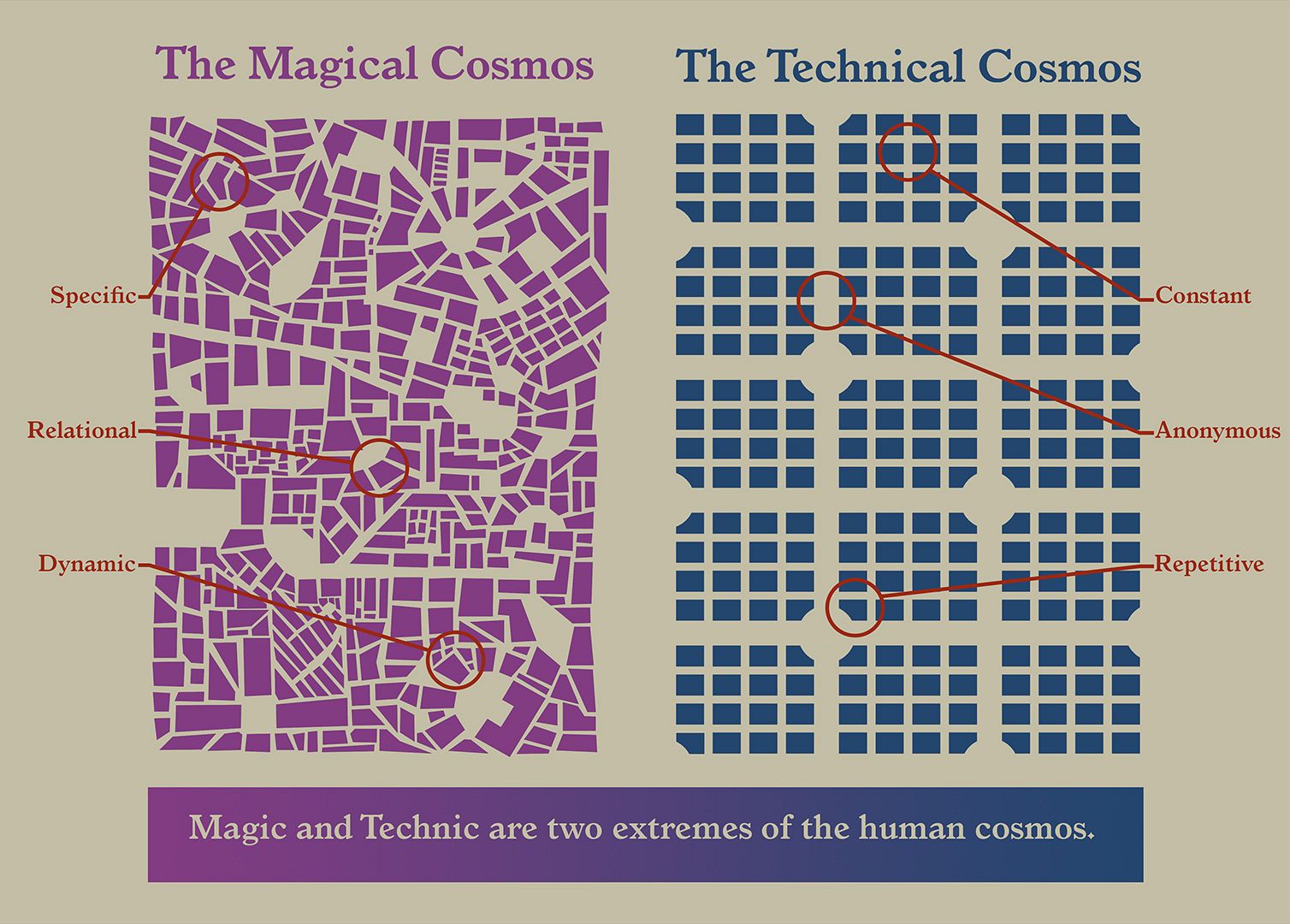
Aaron Kopp
Keywords: Architecture, Climate change, Biodiversity
Through my work I explore the relationship between physical and mental structures – the built environment and social values. Within my exploration, two subjects are particularly fascinating and fruitful to me. First, what I call “other spaces” – places that distinguish themselves from their surrounding by being or encouraging otherness. Second, the political and philosophical dimension of place-making. Throughout the last years I have been working on three distinct scales: individual freedom, community perspectives, and urban policy shaping culture. What I produce and offer are spatial-strategies that empower individuals.
The magical cosmos is a worldview and has nothing to do with card tricks nor a wizard school. But one that facilitates the experience of meaning beyond rationality by activating the individual’s imagination. Opposite to the magical cosmos is the technical one, which according to Federico Campagna is today the dominant worldview in central Europe. Technic operates through separating and automating while magic acts by integrating and transforming. As a society we are facing highly complex challenges today. I believe what is needed to answer those challenges are imagination and the willingness to transform, qualities central to the magical cosmos. I share Campagna’s sentiment and feel a cultural imbalance towards technical thinking whose tendency to safety and stability suspends imaginative transformation.
Nature is incredibly complex and we experience it deeply. Very simplified, magic views nature as the life force which connects everything, while technic regards nature as a factor to protect against. Because it’s complexity engages our imagination and all our senses are evolved to perceive its metamorphoses, I see nature as the ideal threshold from the technical to the magical cosmos. Cities are manifestations of culture and what is present at their center is recognized as culturally important. The center of The Hague is almost exclusively commercial. It is there, the threshold must be located.
What I am proposing is a new tradition: the annual sacrifice of one building. Every year one empty or commercial building is selected and acquired by the municipality. The building is broken down, the construction materials and the ground are rearranged on site, inviting nature to take over and establish itself. The façade is the only part left behind as a porous boundary facing the street. However, it is sealed off and only after 10 years the entrance to the new ecosystem is opened to humans. This tradition is intended to last beyond a century. At first, the center will host a handful of green spaces; later on they will form connections and clusters. Until, eventually the structure of the city will transform, from one restricting nature to fragments, to a structure which interlaces the natural ecosystem.


DESIGN IN THE MAGICAL COSMOS: RE-ENCHANTING THE HUMAN EXPERIENCE.
Thesis
Dear fellow Explorer, I am thrilled to have you join me on this journey. I don’t know about you, but magic has always been fascinating to me. Magic seems to constitute what is beyond human capability, yet it appears to be exclusively and deeply human at the same time. I can see traces of magic in every culture and it always connects to nature. Where do you see magic? My dear reader I really hope you are prepared to ask yourself such questions because I need you to be sharp and involved going forward. The experience of magic is not like popping a Valium and enjoying the ride, to experience the full power of magic you have to sit in the driver’s seat. I am a spatial designer and my fascination with magic has only grown in recent years as I cannot shake the feeling that magic holds the answers to social issues I am confronted with when designing spaces. Magic is a vast subject and I will not be able to address and analyze specific issues within the present work, for now, my ambition is to take a first step in approaching magic from a designer’s perspective. My central research question is: which design strategies can be discovered by examining the role magic plays in the human experience? In the first chapter, I will begin by asking: what is the experiential value of magic? The second chapter will engage with the follow-up question: how is the magical experience constructed? Third, I will investigate: what is the social value of magic? Finally, in the fourth chapter, I am going to make my first approach and ask: where do magic and design meet? Without further ado, let’s get started and find out what magic has to offer.